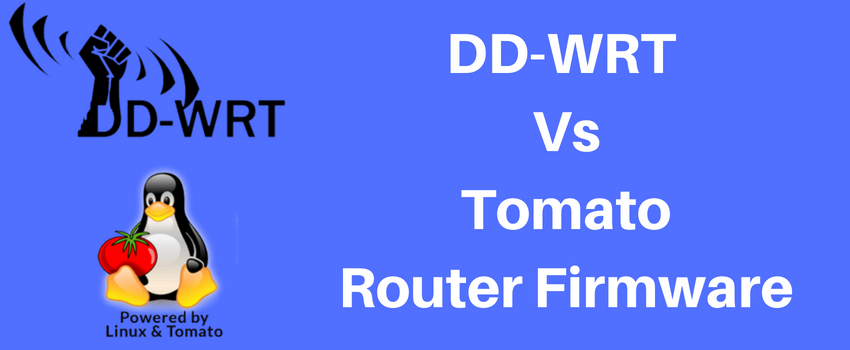People that want to super-charge their home router devices and add additional software features not provided by the manufacturers (such as VPN, increased WiFi signal power, better security, advanced LAN networking features etc), flash their routers with one of the open-source firmware available.

There are mainly three well-known custom firmware that you can download for free and install on your supported router. These are DD-WRT, TOMATO, and OpenWRT.
In this article we will compare DD-WRT vs Tomato and see their characteristics, pros and cons, similarities and differences etc.
DD-WRT is considered the most popular from all. However, Tomato is more lightweight and less buggy as we’ll see below. Let’s go ahead with more details below.
Common Features Between Tomato and DD-WRT
Some of the common features include a file server, advanced Quality-of-Service (QoS), Telnet and Samba server, port triggering and forwarding, improved firewall settings, simple navigation, VPN client and server support, extended WiFi coverage etc.
Of course, there is a long list of all supported features on the developers’ websites. All of these are offered for free, due to the fact the firmware is free to download from the official website.
Differences between DD-WRT and Tomato firmware
Pros and Cons of Tomato
In direct comparison, Tomato is slightly better for average users. It is more stable, it will work perfectly on under-powered routers and it is easier to configure. All of this is possible thanks to having less code which is implemented into the firmware. Less code means a lower number of bugs and as such, this firmware is a much better alternative if you are looking for a stable option.
Also, Tomato has some nice reporting capabilities such as real time traffic monitoring, stats and logs on inbound/outbound connections etc which DD-WRT does not have.
Don’t forget though that Tomato firmware isn’t compatible with as many routers as the DD-WRT firmware is. Here are some of the best routers that can work with Tomato firmware.
Pros and Cons of DD-WRT
The latter firmware option has an impressive website data organization and it runs on most devices without a problem. In summary, it supports much more router models compared to Tomato.
Having also more features, we can deduce that DD-WRT is more suitable for advanced users who need those extra features and who don’t want to encounter any limitations.
Despite the fact that DD-WRT comes with a lot more features, it has larger code, which makes it prone to bugs. Users have reported that this firmware has up to 40% more bugs than Tomato. Navigation is the second issue. It is a difficult firmware for beginners and those who are not proficient with router firmware. Last, but not least, DD-WRT firmware is more complicated to flash and in some cases, you may need professional help.
Summary
The bottom line is that DD-WRT offers more capabilities and it will run on more powerful routers and supports more models compared to Tomato. But, it is also complicated to use and comes with many bugs.
Tomato firmware, on the other hand, is easier to use, it is a more stable version and it will run perfectly on the supported routers, even on less powerful devices. However, it doesn’t have as many features as DD-WRT.
Leave a Reply